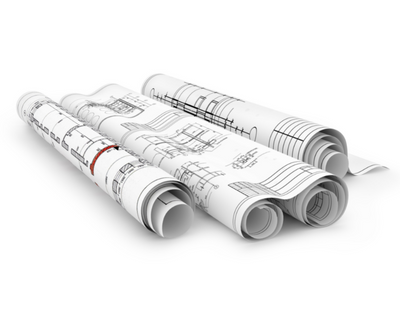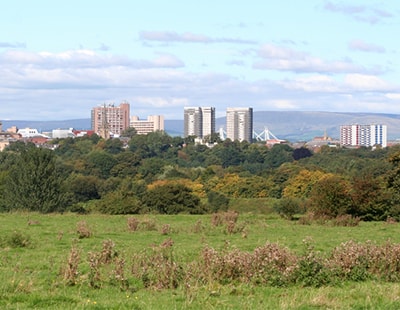Brighton remains the most profitable place to be a landlord for the second year running, with landlords in the coastal resort making a monthly profit of around £570.
The findings, which took into account rental fees charged to tenants and landlord costs, also put Leeds (monthly profit of £477.60) and Lancaster (monthly profit of £474.54) in the top five.
The rest of the top 10 was made up by Bristol, Coventry, Manchester, Nottingham and Salford, all areas that are popular among students or young professionals, or both.
Stuart Williams, director of property investment firm Thirlmere Deacon, commented: “Over the last few months, some landlords have seen their profits dented due to the Chancellor’s tax measures that are only now taking effect. Undoubtedly, it is becoming more difficult for amateur investors to make a profit in the buy-to-let market due to legislation changes and financial pressures, [but] there is still a lot of money to be made if landlords and investors make the right investment decisions.”
He added: “If investors can purchase cheaper properties with higher yields, they will have the opportunity to protect and boost their profits in the longer term. For example, an average residential property in London is around £500,000 with rental yields of circa 2%, while a flat in a good area of Manchester could cost half the price and generate 6-7% rental yields on top of 4-5% annual capital appreciation.”
He says landlords should review their existing portfolio to see if they can boost rental income and protect profits, by attracting a different market. Landlords will often find the best returns in urban areas, with a concentration of students and young professionals.
“It is also worth landlords considering setting up a limited company and using this structure to hold their properties. This will enable them to continue deducting mortgage interest when they are calculating profits,” he advised.
“Landlords can also benefit from just 20% corporation tax, instead of income tax of up to 45%.”
Williams says landlords need to do a serious portfolio review and work out how the tax changes affect them and what options there are to save, or make more money. For example, remortgaging to get a better deal or renovating some old stock - these costs will be tax deductible, he says.
“Alternatively, landlords could consider selling some properties or increasing the rent,” he added.
Below, Williams provides some top tips on how to make a buy-to-let investment profitable, avoiding pitfalls along the way.
1. Real profit: The most important lesson is that the real profit is made when property is bought, not when it is sold. In other words, if you can buy a £’s worth of property for 80p, then you can supercharge your returns. By purchasing under market value (or Below Market Value as some people call it - BMV) assets, you are locking in instant equity (and profit!) as soon as you buy.
2. Buy for cashflow: Property is an asset rather than a liability. An asset puts money in your pocket every month. When investors ignore cashflow and invest primarily for appreciation, they’re no longer investing. Instead, they are speculating on higher prices, which is akin to using tarot cards to plan your finances. Cash (flow) is king as they say!
3. Invest for the long-term: Once you have found a property that can be purchased below market value and that cash flows nicely, then you can invest for the long-term. Buy and hold is the cornerstone of many rich investors’ strategies. Despite the occasional short-term fluctuations in the UK property market, the long term trend is up, due to the fundamental reason that demand is greater than supply. Don’t wait to buy property. Buy property and wait. Think long-term, but act on short-term opportunities. Property is forgiving over time and can bury mistakes.
4. Have a cash buffer: The investors who get into difficulty are often the ones who do not have any spare cash to access in case of emergency. As an investor, you will find unexpected costs and so you must have some spare cash to cover these instances. The size of this buffer depends on your personal level of risk. Cash reserves trump cash flow.
5. Opportunities always exist: There is never a wrong time to buy real estate. When times are good, people complain about the deals they have missed. When times are bad, they claim they ‘buy at the top’, thinking that prices will fall and therefore it’s not a good investment. The lesson I have learned is that you can build wealth in any real estate market, good or bad. The only constant is change. When the market changes, it brings new and different opportunities. You just have to be on the lookout for them.
There is never a bad time to buy, as long as you choose the right strategy. For the individual buy-to-let investor, there is no such thing as a good market or a bad market, only whether or not he or she has a good or a bad deal, and if you keep sitting on the fence you aren’t even IN the market whatsoever so have zero chance of making even a single penny.
6. Action and discipline: Once you have your plan, then you need massive action and discipline. Look at the top sportsmen. You need this type of discipline to be a successful investor. You need to put in the hard work and the hard hours, do a huge amount of research and then when you have the plan that’s right, you need to take massive action.
7. Avoid big risks: Never risk too much at any one time or on any one deal. In real estate deals, so much lies out of your control. Remember risk and reward are directly related. However, a lot of the risk can be removed by doing huge research and work.
8. Research the local economy: Never pursue an investment strategy in real estate without closely monitoring the local economy and local real estate market where you are investing. Property investment is a local game. No-one ever bought a house in the whole of the UK.
Forget the national price indices. Focus solely on one or two areas and get to know them like the back of your hand. In order to invest successfully in an area, you must know it intimately. The more areas you invest in, the less intimately you can know them, and the more likely you are to miss a change in tempo there, or an important new development in the local market.
9. Buy in an up-and-coming area: Ideally buy your first property in an area that is about to come up, in order to benefit from higher than ordinary capital growth. Areas with new transport links, for example.
The higher the yield, the less expectation there is in the market of capital growth. You will need to find the right balance for you by researching the sales and rental market in your chosen location. You can fast-track your property journey by working with an experienced investment adviser or mentor but as per point number 6...you need to be prepared to take action. Only you hold the key to your financial future.









.png)










Join the conversation
Be the first to comment (please use the comment box below)
Please login to comment